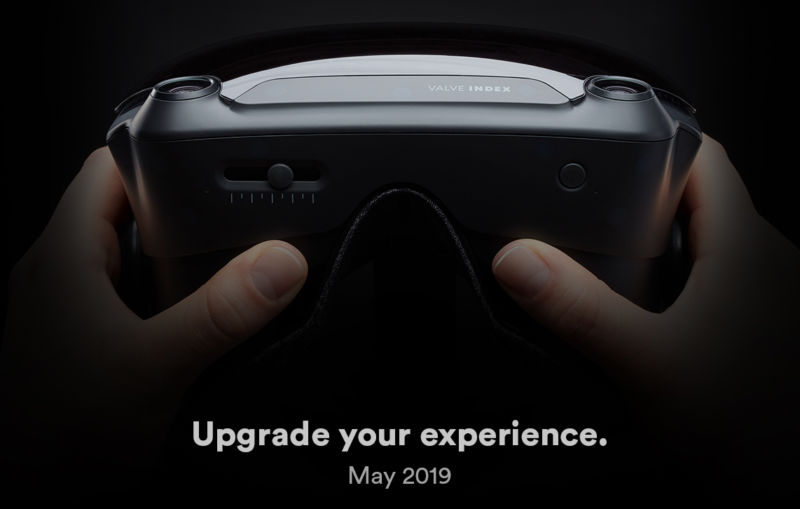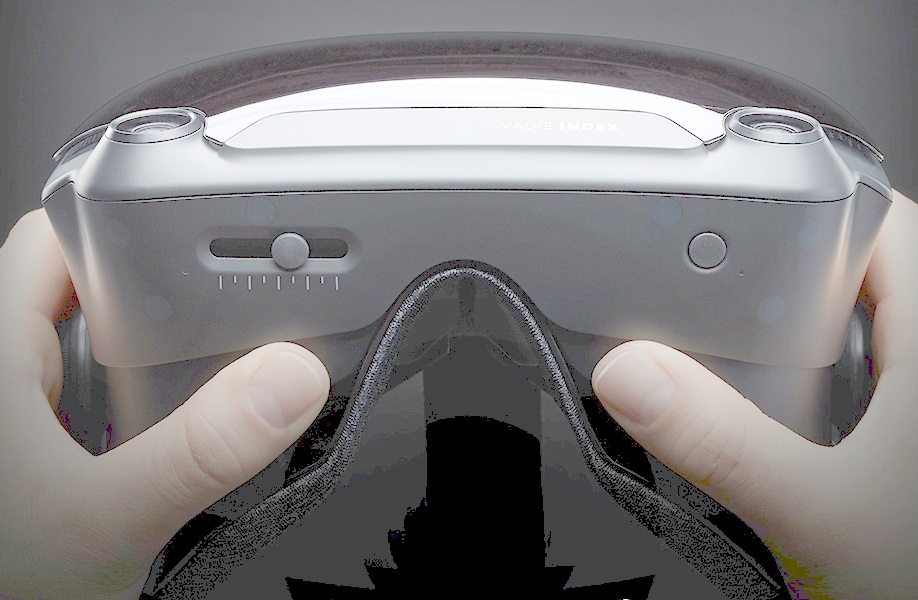
Valve Corporation’s long-rumored VR headset is finally real. After allying with HTC to launch the Vive as a SteamVR product in 2016, Valve has moved ahead with plans to launch its own headset, the Valve Index, in “May 2019.”
The news came on Friday in the form of a single teaser image, shown above, of a headset with the phrase “Valve Index” written on its front. The front of the headset is flanked by at least two sensors. This shadow-covered hardware matches the leaked headset reported by UploadVR in November of last year. That report hinted to Valve’s headset supporting a wider, 135-degree field-of-view (FOV), as opposed to the roughly 110-degree FOV of the original HTC Vive and Oculus Rift.
Valve’s dedicated website for the new device includes no other information than the above image and the date “May 2019.” It does not include any mention of the new SteamVR Knuckles controllers, which Valve has advertised pretty heavily via developer outreach since their 2016 reveal and a later series of improved prototypes in 2018. This page also doesn’t mention a series of three Valve-produced VR games that have been repeatedly advertised by Valve co-founder Gabe Newell since 2017.

Since Valve’s official page includes so little information, we’re left picking at the single image to figure anything out. Jacking up the brightness and contrast (seen above) reveals a series of six dots on one of the headset’s surfaces. These resemble the faint dots used by HTC Vive, which may hint to this headset’s use of an outside tracking sensor, a la the HTC Vive’s infrared trackers. Even so, those two giant lenses imply that “inside-out” tracking, managed entirely by the headset without any extra webcams or sensors, may also be in the cards. Additionally, we can see a giant physical slider, which is likely linked to interpupillary distance (IPD), a precise measurement needed to ensure maximum VR comfort.
The “May 2019” window should put Valve Index on pace to launch right next to two new Oculus headsets. The wireless, no-PC Oculus Quest and the PC-connected Oculus Rift S are both slated to launch in “Spring 2019,” and we went eyes-on with both headsets at last week’s Game Developers Conference.
https://arstechnica.com/?p=1483509

